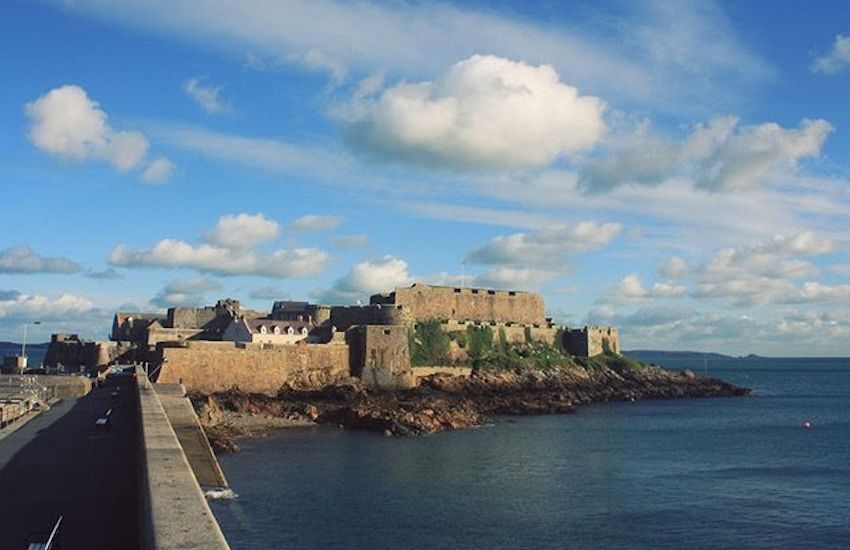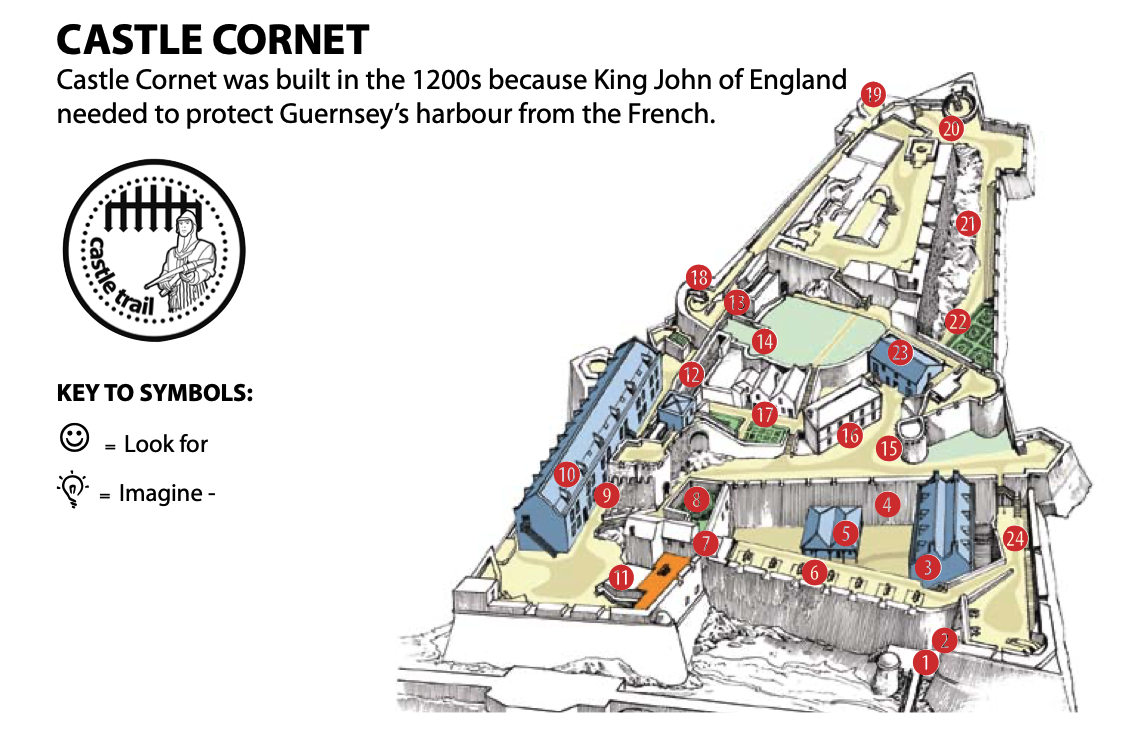


The part of Castle Cornet known as Prisoners Walk is to be excavated potentially giving up secrets which have lain undiscovered for hundreds of years.
The archaeological dig has been given the go ahead by planners so it can proceed before resurfacing work is carried out.
That work is due to happen before the castle reopens to visitors at Easter, so the dig will happen even sooner.
Anything that may be found during the dig could go on display in the museum in time.
In the past, excavation work at Castle Cornet has revealed a human skeleton - which is now on display within the castle grounds.
The 2024 dig will be led by States Archaeologist Dr Philip de Jersey.
"Essentially we’re using the need to replace the surface in the Prisoners’ Walk as an opportunity to excavate in this area, which hasn’t been archaeologically excavated before – and hopefully learn a bit more about the development of the castle in the medieval period, specifically the 14th century when this part of the castle was enlarged," he explained.
The excavation area will measure 14m x 1.6m incorporating the area of the path which is most damaged and is an area which Dr de Jersey and his team believe has the highest archaeological interest.
"There should be an earlier drawbridge pit concealed under there, which is the sort of feature which should have collected a large quantity of finds – pottery, coins etc – over a long period, so lots of evidence there for the people who were living in the castle in the 14th or 15th centuries. Because the Governors of the island lived in the Castle until 1672 (when the Keep was hit by lightning and exploded), there tend to be some quite high status finds – good quality pottery imported from France, for example, and potentially metalwork such as brooches, buckles etc as well as relatively high value silver coinage.
"Of course we won’t know until we actually dig it, but the potential is certainly there for lots of finds. Previous excavations at the Castle (mostly in the 1980s) were very rewarding and I hope that this will be just as productive."

Pictured: Prisoners Walk is at no.12 of the provided map of Castle Cornet.
Prisoners Walk is the covered section that visitors walk through as they first arrive at Castle Cornet.
When the castle was on its own islet, separate to Guernsey, Prisoners Walk would have been on that island. The walkway would have had portcullis at both ends to block entry to the islet and castle from enemy forces.
The walkway, like much of the castle, dates to the 13th century with Prisoners Walk believed to be among the oldest parts of the site.
While it is now a visitor attraction and public amenity, the castle has been used by the military as recently as the last century when the German Occupying forces used it as part of their defence of the island.
Castle Cornet had already been protected by Guernsey prior to the modern era defining Occupation though, when it was listed in the 1930s.
The entire site is protected.
1204 - the oldest parts of Castle Cornet were built in this era
1338 - the French took Castle Cornet and held it for seven years
1642 - Guernsey declared for Parliament at the outbreak of the English Civil War while Castle Cornet remained loyal to the Crown
1800 - Fort George replaced Castle Cornet as Guernsey's main garrison
1860s - a wooden bridge was built connecting Castle Cornet to St Peter Port
1940 - renamed Stuzpunkt Hafenschloss (Strongpoint Harbour Castle) by the German army, Castle Cornet was used by the Occupying forces who modified it in many ways
1947 - His Majesty King George VI handed Castle Cornet as a gift to islanders
A full history of Castle Cornet can be read HERE.
King Charles III has visited Castle Cornet while his past namesakes also have links with the island fortification.
At the outbreak of the Civil War in 1642 Guernsey declared for Parliament while Castle Cornet, under the Governor Sir Peter Osborne, remained loyal to King Charles I.
The Castle was under siege throughout this period but it remained firm for nearly a decade with Castle Cornet the last Royalist stronghold to surrender in 1651.
King Charles II used Castle Cornet to banish one of his opponents. Major-General Sir John Lambert was held there between 1661 and 1670. He was responsible for the gardens which still bear his name.
King Charles III - then Prince of Wales - attended a ceremony at Castle Cornet in July 2012, where the islands swore allegiance to the Crown.
Representing his mother, Queen Elizabeth II, and accompanied by his wife, the then-Duchess of Cornwall, Charles III spent two days on a tour of the Bailiwick, visiting Herm, Sark and Alderney as well as touring Guernsey.
Castle Cornet Bridge: Now and then
Replacement Castle Cornet bridge "will last for 50 years"
Up to £7m. needed to maintain access to Castle Cornet
Vandals climbed into Castle Cornet via scaffolding
Medieval celebrations at Castle Cornet
Comments
Comments on this story express the views of the commentator only, not Bailiwick Publishing. We are unable to guarantee the accuracy of any of those comments.